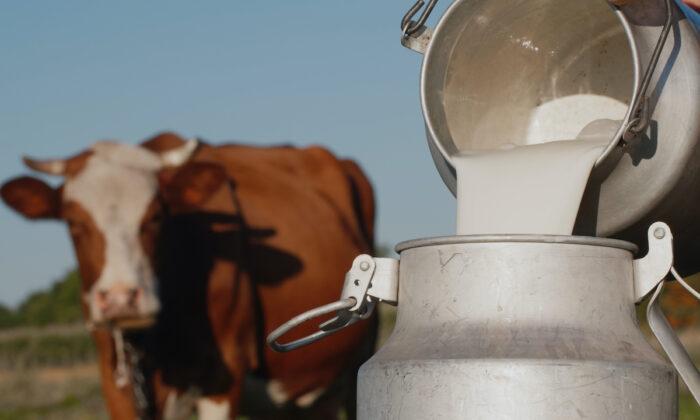What Is A1 Milk?
Most milking cows in the United States produce a type of milk called A1 milk. They’re usually Holstein cows, which originated in Northern Europe and were brought to the United States predominantly for their high milk production.What Is A2 Milk?
A2 milk is typically obtained from older breeds of cows, such as Jersey cows. Contrary to the name, not all A2 milk contains only A2 casein. If the label claims the milk is “A2,” it can still contain both A1 and A2 casein. The label must claim 100 percent A2, or A2/A2, meaning the cow produced milk that only contained A2 casein.A2 casein contains several benefits when compared with A1 casein.
Unlike A1 casein, A2 casein doesn’t look structurally similar enough to gluten to elicit an immune response. While it’s theoretically possible for A2 casein to trigger an immune response through molecular mimicry, the chance is substantially lower compared with A1 casein. Therefore, people with gluten sensitivity might be able to consume A2 dairy.
Additionally, A2 milk doesn’t contain the same morphine-like compounds found in A1 milk. A1 casein contains a sub-protein known as casomorphin, which is released when A1 casein is digested by the body.
Furthermore, if A1 casein triggers inflammation that leads to pain, but the pain is masked by casomorphin, you may not know the offending food is dairy.
My husband is a perfect example of this phenomenon. He regularly consumed a nightly glass of A1 milk without any immediate or noticeable symptoms of an allergy or sensitivity. Over time, he developed lupus, and I suggested he remove dairy from his diet.
He was adamantly opposed to the idea because he didn’t have any obvious symptoms and he felt “good” after drinking his nightly glass of milk. Eventually, he reluctantly gave up dairy, along with other foods that were triggering inflammation, and the lupus reversed.
Can You Go A1 Dairy-Free and Still Eat Your Cheese?
A study published in 2021 in the International Journal of Environmental Research and Public Health reported that when A2 casein is digested, it forms completely different casomorphin compounds with different functions from the compounds formed when A1 casein is digested.In contrast, when people consumed milk containing only A2 casein, production of the antioxidant glutathione was increased. The researchers concluded “milk containing only A2 beta-casein and not A1 beta-casein has the potential to promote the production of the antioxidant glutathione in humans.”
When preschoolers consumed A1 milk, their levels of beta-casomorphin-7 increased along with an increase in inflammatory markers in the gastrointestinal tract. In contrast, when A2 milk was consumed, glutathione levels significantly increased, and improvements were measured in gastrointestinal function, such as higher fecal concentrations of short-chain fatty acids.
These results indicate improved colonic health, according to the researchers, because short-chain fatty acids “are fermentation products of gut microbiota, with reported anti-inflammatory properties, able to amplify colonic cell function.”
The researchers concluded that A1 milk induces “an inflammatory state that exacerbates symptoms associated with LI [lactose intolerance]. This exacerbation can be reduced by removal of A1 beta-casein (via replacement with A2 beta-casein), with subsequent improvement in gastrointestinal symptoms and aspects of cognitive function.”
The Bottom Line
A1 and A2 milk aren’t created equal. A2 milk is chemically different from A1 milk and, consequently, has different biological effects on the body.Therefore, if casein is the only problematic component of dairy for you, A2 dairy might be a viable option if you don’t want to go 100 percent dairy-free. However, if you’ve had issues with dairy in the past or currently suspect you have issues, check with a health care practitioner before adding dairy to your diet.
My Personal Dairy Guidelines
Even though I’m healthy and disease-free, I still rarely consume dairy. However, if I do, I follow these guidelines:- The cow must be 100 percent A2, or A2/A2, meaning it only produces milk that contains A2 casein; it doesn’t produce A1 casein.
- The animal must be 100 percent grass-fed, not grain-fed or grain-finished. A study published in 1987 concluded that, in humans, gluten proteins pass from the mother’s diet into her breastmilk. Therefore, while this phenomenon hasn’t been studied in cows, it’s possible that gluten may also pass into the milk of cows. If that occurs, it could elicit an immune response in the body. Consequently, I only consume milk from 100 percent grass-fed cows since I have gluten sensitivity.
- The animal must be raised using organic or regenerative practices, which means the animal can’t be fed any genetically modified organisms or pasture that has been sprayed with pesticides or herbicides. In addition, no hormones can be administered, and most antibiotics must be avoided.
- I only consume raw, unpasteurized dairy from local farmers I trust. My family no longer eats pasteurized dairy products because the “good” microbes (also known as probiotics) and other beneficial compounds, such as cofactors and digestive enzymes that help your body digest the milk and absorb nutrients, are largely destroyed during pasteurization. However, you need to make sure the farm is trustworthy. Visit the farm, ask questions, and watch the milking and storing process for yourself.






